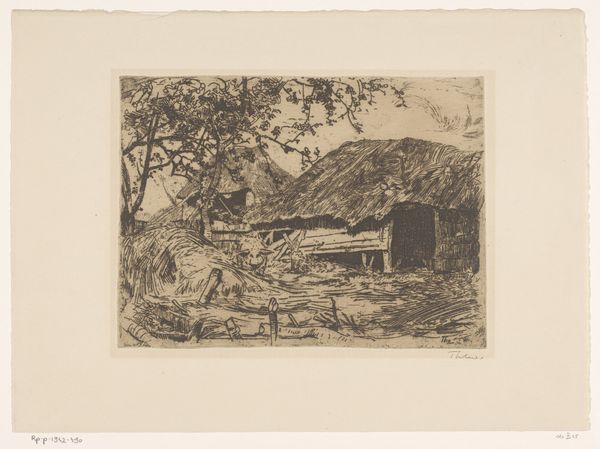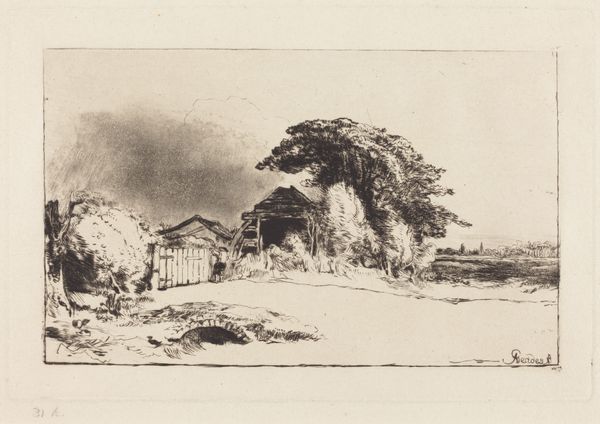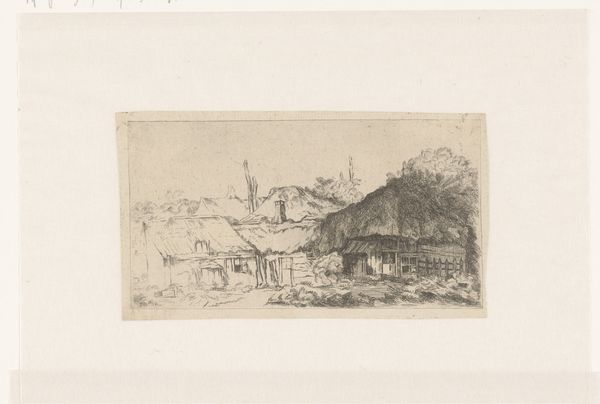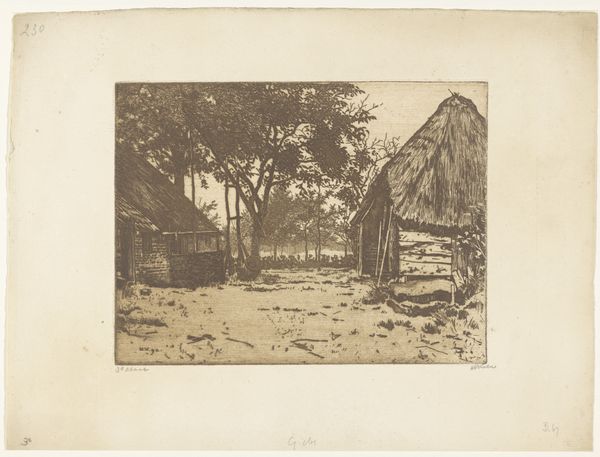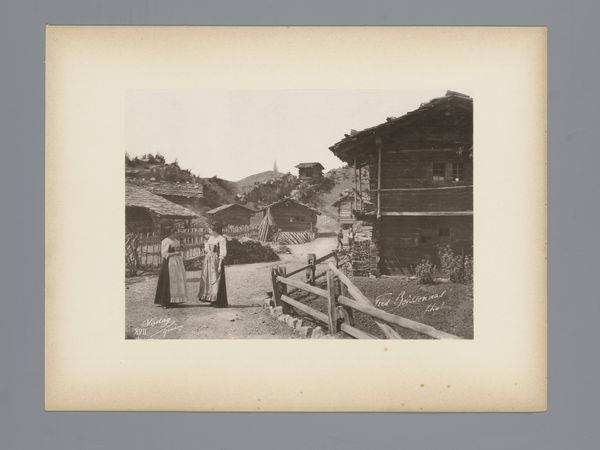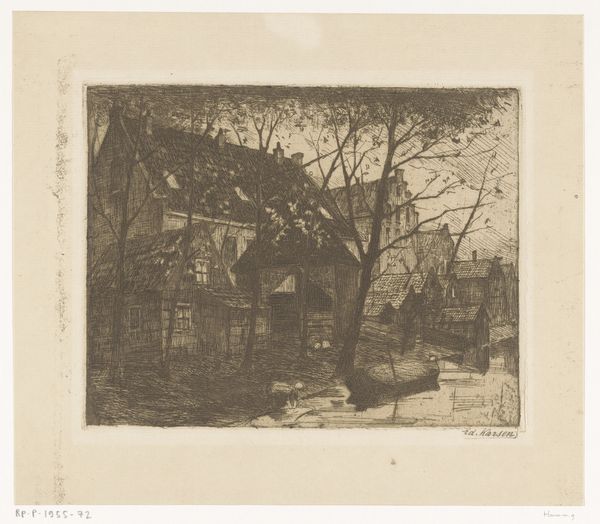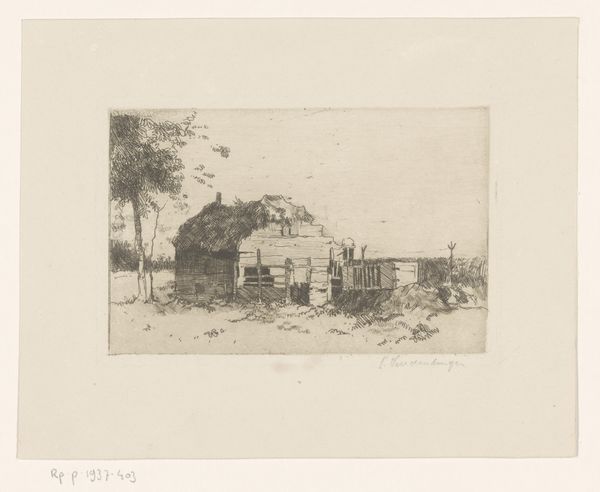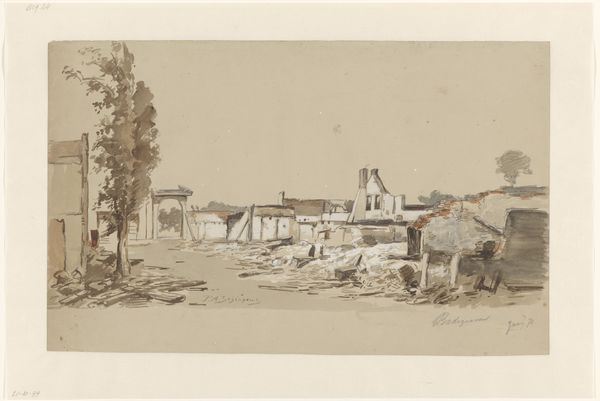
drawing, print, etching, paper, ink
#
drawing
#
ink paper printed
# print
#
etching
#
landscape
#
paper
#
ink
#
genre-painting
#
realism
Dimensions: height 139 mm, width 178 mm
Copyright: Rijks Museum: Open Domain
Curator: This etching by Louis Titz, titled "Boerenerf met jonge vrouw die kippen voert" or "Farmyard with a Young Woman Feeding Chickens," made sometime between 1869 and 1913, captures a quaint scene of rural life. Editor: It’s immediately evocative. There's a subdued quietness to it, a softness even with all those sharp, etched lines. It reminds me of stepping back into a less hurried time. Curator: The medium really speaks to that feeling, doesn't it? The intricate details achievable through etching on paper, using ink of course, allowed Titz to depict the textures of the farmyard, the weathered wood, and even the feathery forms of the chickens. Editor: Absolutely, and let’s think about that “young woman.” Here, she’s integral to the farm’s ecosystem, an active participant in its daily operations. It highlights a woman's role in the domestic sphere and labor, perhaps offering commentary on the socio-economic realities of rural women. Curator: It's also interesting how Titz used readily available and relatively inexpensive materials. Paper and ink made art accessible to a broader audience, moving away from traditional, costly oil paintings. Editor: Yes, and thinking of consumption and audience – how did portrayals of idyllic farm life cater to or shape urban perceptions of the rural population? Did it reinforce or challenge stereotypes? Curator: It’s important to consider that. And while it seems simple, producing this level of detail demanded time, skill, and specific knowledge. We often forget to consider the physical labor of creating art. Editor: Exactly. Viewing this etching invites us to think about gender roles, class, and labor... intersecting at the very heart of the work. I am curious how Titz saw these female farmers of this era and what exactly he was trying to communicate by choosing this subject matter. Curator: Considering the processes and means by which the artwork came into being gives the whole image more context and meaning. Thank you, these historical elements are all so significant! Editor: Of course, it’s about revealing the multiple layers interwoven into even seemingly simple scenes.
Comments
No comments
Be the first to comment and join the conversation on the ultimate creative platform.


